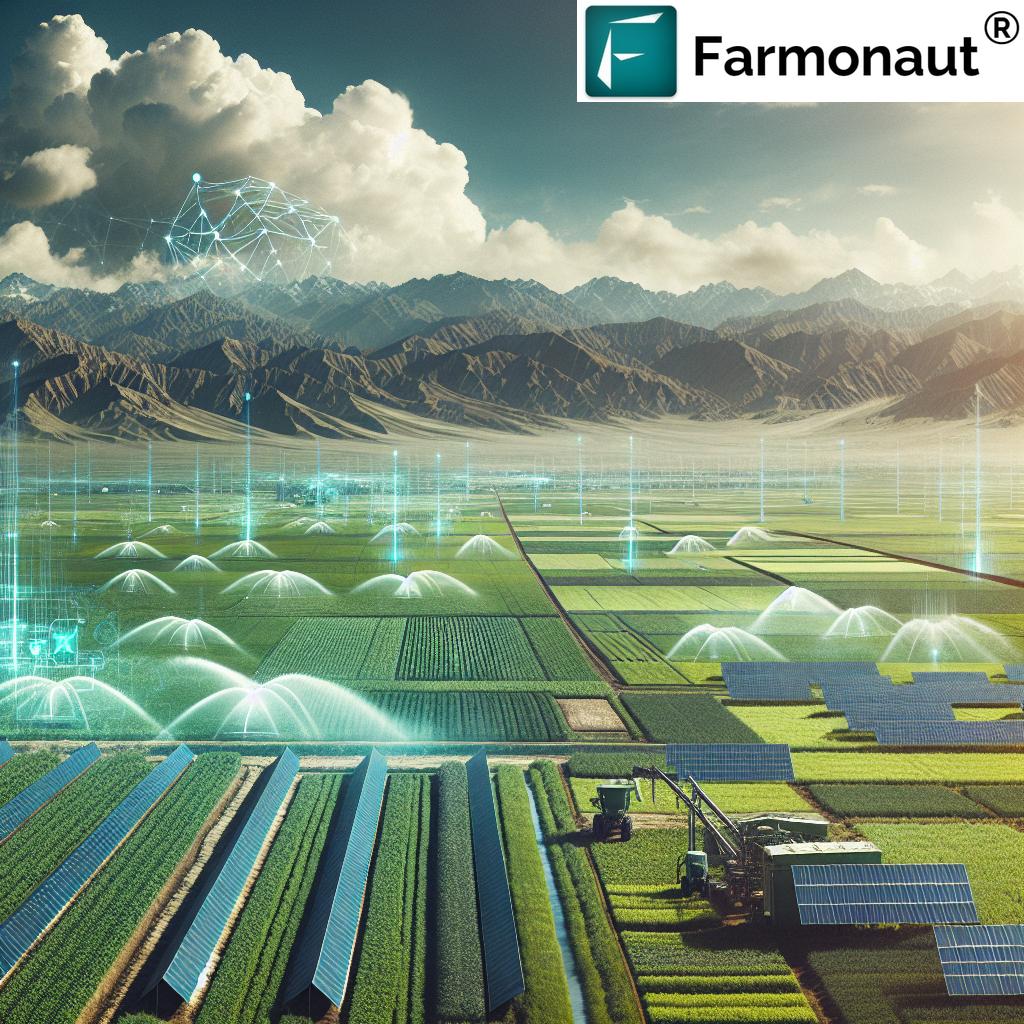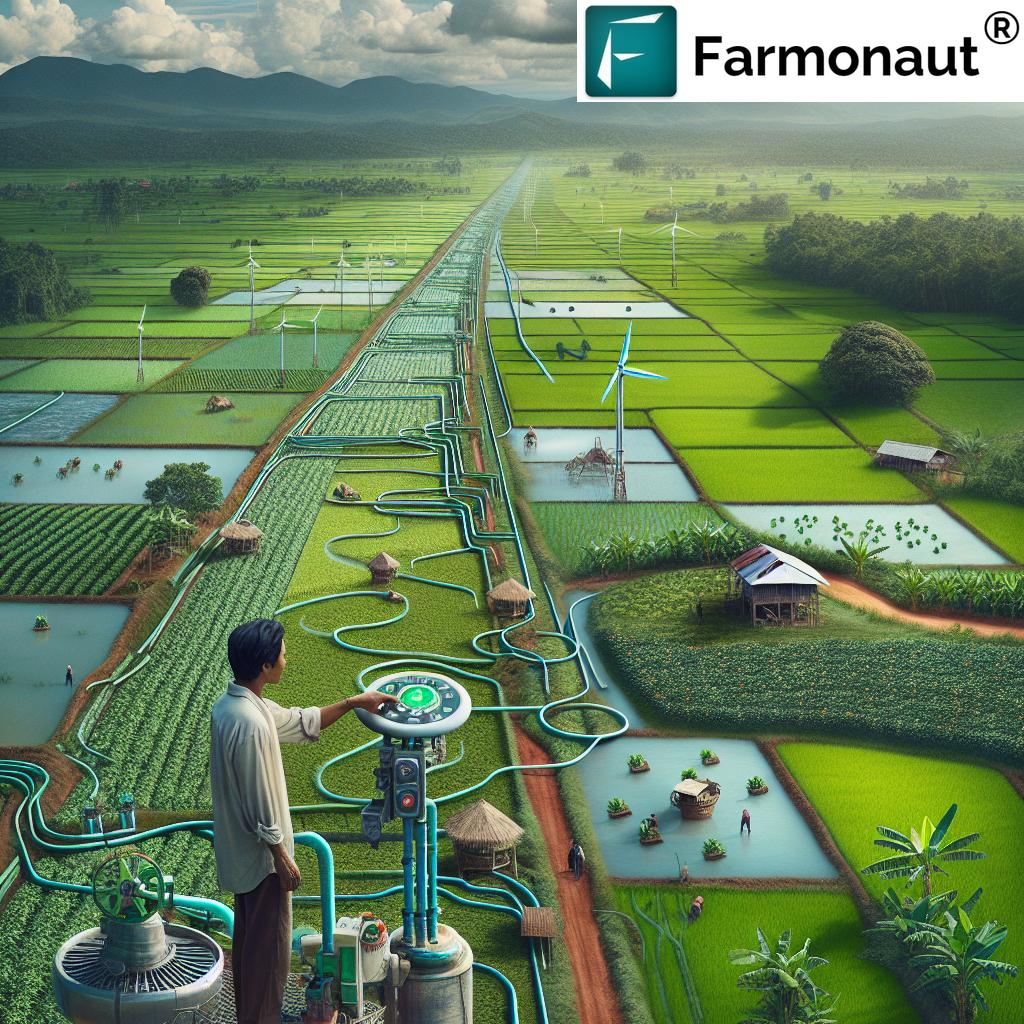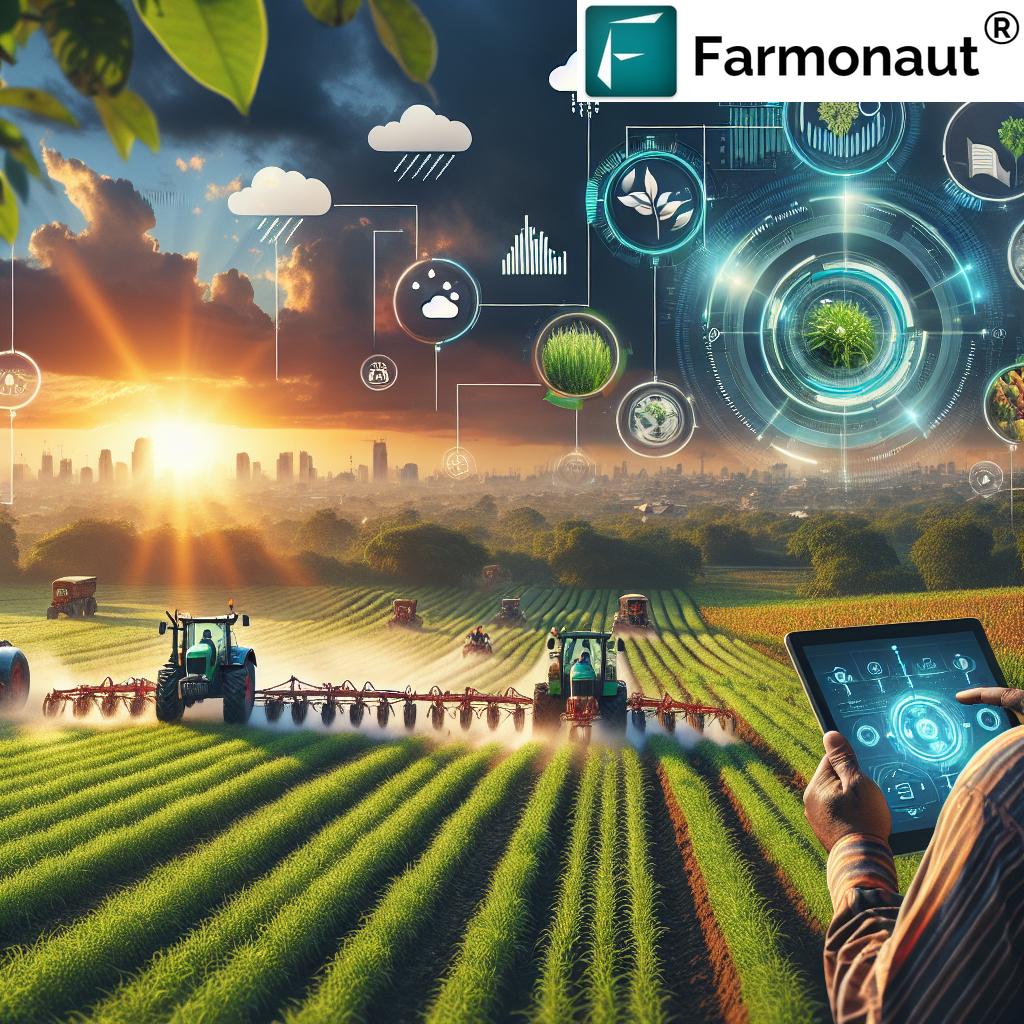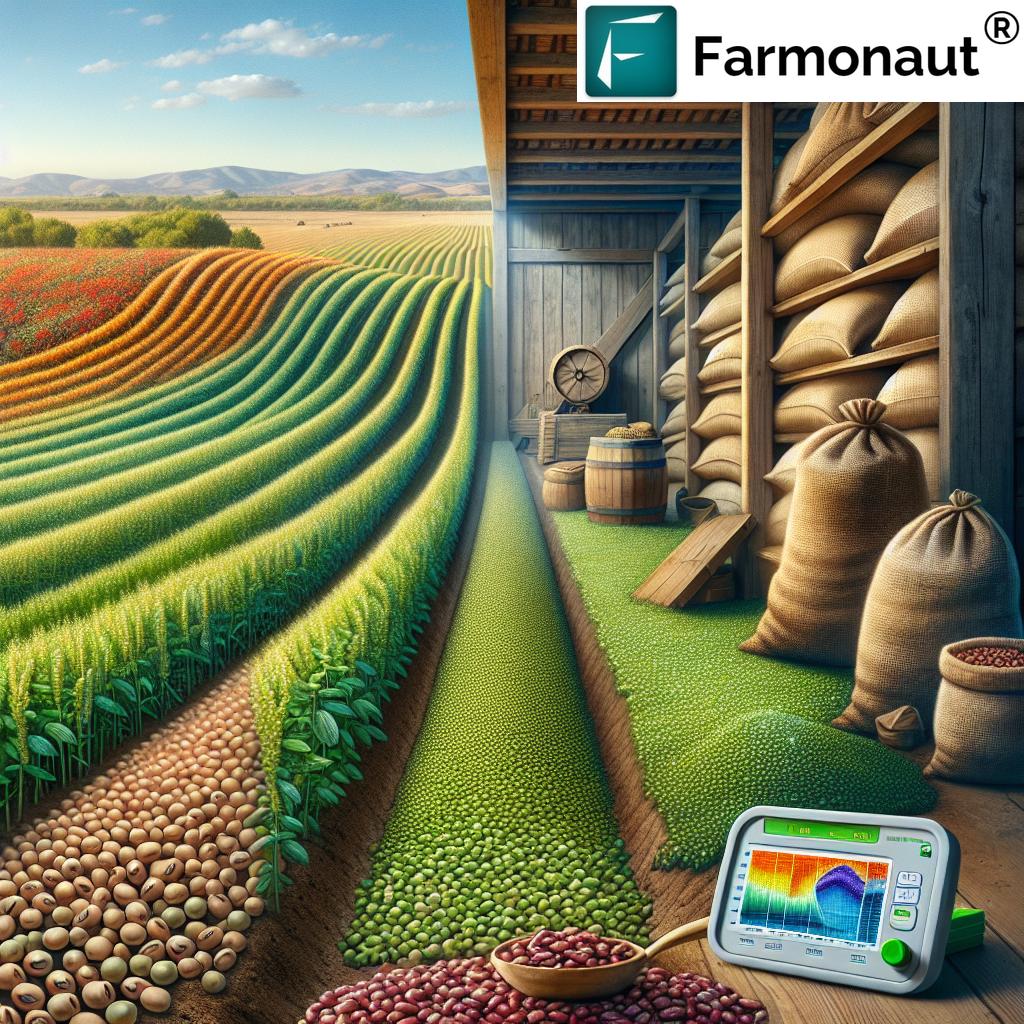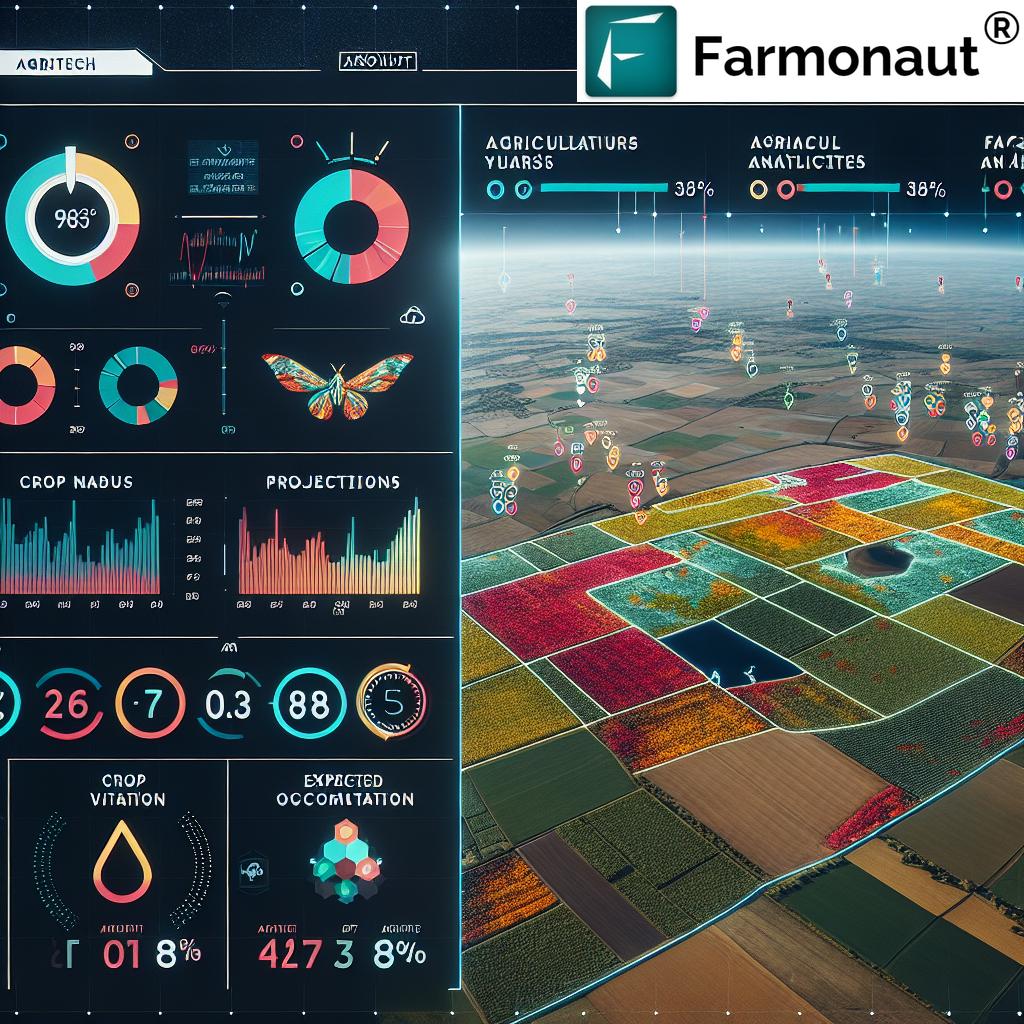Intensive Subsistence Agriculture: 2025 Trends & Examples
Meta Description: Intensive subsistence agriculture remains central to food security in 2025. Explore trends, examples, maps, practices across Asia and Africa, and how resilience underpins global nutrition.
Table of Contents
- Introduction
- Defining Intensive Subsistence Agriculture
- Geographic Distribution and Mapping in 2025
- Intensive Subsistence Agriculture Examples Around the World
- Regional Comparison Table
- Key Practices and Systems
- Sustainability Challenges and 2025 Trends
- Resilience and Food Security for 2025 and Beyond
- How Satellite Technology Empowers Sustainable Practices
- Farmonaut: Digital Tools & Resources
- Conclusion
- FAQ
“Intensive subsistence agriculture supports over 2.5 billion people globally, especially in densely populated regions of Asia and Africa.”
Introduction: Intensive Subsistence Agriculture at the Heart of Global Food Security in 2025
Intensive subsistence agriculture is far more than a relic of traditional farming; it is the beating heart of food systems throughout vast parts of Asia, Africa, and Latin America in 2025. As global population surges, nearly reaching 8 billion, this agricultural system enables millions of smallholder farmers to maximize yields per unit of land, sustaining rural livelihoods and fortifying regional food security. While often overlooked amid talk of agricultural tech revolutions, intensive subsistence agriculture serves as the cornerstone of nutrition, resilience, and survival for much of the developing world.
Key Focus Keywords: intensive subsistence agriculture, intensive subsistence farming, intensive subsistence agriculture map, intensive subsistent agriculture, intensive subsistence agriculture example, agriculture, intensive, subsistence, food, land, farmers, Asia, security, 2025, regions, labor, systems
Defining Intensive Subsistence Agriculture: Characteristics and Importance
Intensive subsistence agriculture refers to a high-effort, low-capital farming system focused on maximizing output from small plots of land. Unlike extensive agriculture, which spans vast tracts with limited inputs, intensive subsistence farming is characterized by:
- High labor input per hectare
- Predominantly manual, relying on traditional tools and minimal mechanization
- Multiple cropping patterns (often two or more crops per season)
- Careful land management and utilization of organic fertilizers, such as manure and compost
- Adaptation to difficult climatic conditions, limited land availability, and resource constraints
- Reliance on family labor rather than hired labor
- Production oriented primarily toward food security for the farmers’ families and local markets, rather than large-scale output
These key features are especially prevalent in densely populated regions, such as the Indo-Gangetic plains of India, the river valleys of Bangladesh, Nepal, the terraces of southern China, and in vast swathes of Southeast Asia. In these areas, every square foot of arable land is managed with meticulous care to sustain families and communities.
Geographic Distribution and Mapping of Intensive Subsistence Agriculture in 2025
Today’s intensive subsistence agriculture map highlights the world’s densely populated regions reliant on subsistence farming for survival:
- South Asia — including India (especially the Indo-Gangetic plains), Bangladesh, Nepal
- East Asia — China, Taiwan
- Southeast Asia — major populations in Indonesia, Vietnam, Philippines
- Sub-Saharan Africa — regions of intensive subsistence farming in Nigeria, Ethiopia, and East African highlands
- Selective parts of Latin America (e.g., Andean highlands)
In 2025, advances in digital mapping are revolutionizing our understanding of the geographic distribution of these systems. High-resolution, GIS and remote sensing enable us to track shifts in land use patterns, assess crop intensification, and monitor resource management for sustaining food security across these regions.
Mapping data—including Farmonaut’s satellite insights and API-driven analytics—allow for more informed policy-making and intervention planning. When governments, agencies, and food systems actors can visualize the true distribution of intensive subsistence agriculture, they can proactively direct aid, optimize resource use, and tailor sustainability initiatives.
Intensive Subsistence Agriculture Example: Practices Across Regions
Rice cultivation in the river valleys of eastern India and Bangladesh is the archetypal intensive subsistence agriculture example. Double and triple cropping is common—sometimes with staggered plantings to maximize water use and harvest windows. Here, farmers maintain small, arable land plots bordered by hand-built bunds and connect with intricate canal systems. Labor-intensive activities such as transplanting rice seedlings are often performed by family groups.
- In southern China, hillside terraces enable growing rice, vegetables, and sometimes fish in the flooded paddies, maximizing land use despite steep terrain.
- In Nepal, small terraces along Himalayan foothills support maize, potatoes, wheat, and beans—essential to rural diets and food security.
- Across Southeast Asia (Vietnam, Indonesia), water buffalo are still essential for ploughing, among other traditional tools, and farmers combine organic manure and green manure to enhance soil health.
- In Sub-Saharan Africa (e.g., Malawi, Nigeria), labor-intensive intercropping of maize, legumes (like cowpea), and cassava typifies intensive subsistence farming.
These examples show that intensive subsistence agriculture—across all its forms—remains vital for feeding millions under pressure from limited land resources and growing populations (especially as global population continues to rise).
Regional Comparison Table: Intensive Subsistence Agriculture Practices and Sustainability Factors
| Region | Common Crops | Key Practices | Estimated Yield per Hectare (2025 projection) | Water Usage (Est.) | Sustainability Challenges | Food Security Resilience |
|---|---|---|---|---|---|---|
| South Asia (India, Bangladesh, Nepal) |
Rice, Wheat, Pulses, Maize |
|
4-6 t/ha (rice); 3-4 t/ha (wheat) | 2,500-4,000 m³/ha (rice) |
|
Medium: High population dependence; resilient through cropping diversity but at risk from water scarcity. |
| East Asia (China, Taiwan) |
Rice, Wheat, Vegetables |
|
6-8 t/ha (rice); 4-5 t/ha (wheat) | 3,000-5,000 m³/ha (rice, terraces better conserve water) |
|
High: Strong local food webs, but aging rural populations present risks. |
| Southeast Asia (Vietnam, Indonesia, Philippines) |
Rice, Maize, Cassava, Vegetables |
|
4-7 t/ha (rice) | 2,800-4,800 m³/ha |
|
Variable: Coastal regions face flood/drought threats; uplands more resilient but less productive. |
| Sub-Saharan Africa | Maize, Cassava, Sorghum, Beans |
|
1-3 t/ha (maize); 1-2 t/ha (cassava) | 600-1,500 m³/ha (rainfed, less irrigation) |
|
Low-Medium: Erratic rainfall weakens resilience, but intercropping helps offset crop failures. |
Key Practices in Intensive Subsistence Agriculture
By 2025, intensive subsistence agriculture incorporates a blend of time-honored methods and new sustainable technologies to address complex challenges and maintain productivity on limited land.
- Multiple Cropping: Cultivation of two or more crops per year on the same plot, enabled by favorable climatic conditions or irrigation (notably in India, Bangladesh, Southeast Asia).
- Intensive Labor: Reliance on family members and local labor for tasks from land prep to harvest. Mechanization is minimal due to small plot sizes and resource constraints.
- Integrated Pest and Soil Management: Use of organic fertilizers (manure and compost), intercropping to deter pests and diseases, and manual weeding techniques for sustainability.
- Irrigation and Water Management: Traditional canal networks, check dams, and even solar pumps in modernized areas, to avoid dependence on unpredictable rainfall.
- Resilient Crop Patterns: Interplanting rice with legumes, beans, or pulses (systematically reduces risks of total crop loss in changing climatic conditions).
Sustainability Challenges and Trends in Intensive Subsistence Agriculture (2025)
“By 2025, over 70% of smallholder farms in Asia will face sustainability challenges due to soil degradation and water scarcity.”
Despite its enduring importance, intensive subsistence agriculture faces formidable challenges as the global population continues to rise:
- Small Land Holdings: Farmers often manage tiny plots, limiting economies of scale and almost excluding mechanization.
- Soil and Water Degradation: Years of continuous cultivation without adequate fallow or crop rotation lead to soil nutrient depletion, salinization, and increased chemical inputs in an effort to sustain yields.
- Changing Climate: Unpredictable rainfall, recurrent drought, and flooding increasingly threaten productivity—with disproportionate impacts in regions relying almost exclusively on smallholder agriculture.
- Labor Shortages and Rural Outmigration: Younger generations seek non-agricultural livelihoods, resulting in aging rural populations and increasing per capita labor burden.
- Pest and Disease Pressures: Warmer, wetter conditions, as well as monocropping patterns, are leading to more frequent outbreaks of rice blast, bacterial leaf blight, and other crop diseases.
- Limited Access to Finance and Market Integration: Many smallholder farmers have limited capital to invest in new technologies or sustainable inputs, and lack the leverage to gain better prices for their produce.
These factors threaten not only the sustainability of intensive subsistence agricultural systems in 2025, but also their capacity to act as the cornerstone of rural food security.
Resilience and Food Security: Shaping Sustainability for 2025 and Beyond
Intensive subsistence agriculture is inherently resilient: it thrives in environments where few alternative agricultural models are viable, and it has evolved to maximize returns on minimal input. Yet, continued sustainability depends on adaptation, diversification, and judicious adoption of modern technology. Key strategies for enhancing resilience and food security in 2025 include:
- Agroecological Intensification: Blending traditional knowledge with modern science, including composting, agroforestry, use of organic amendments, and minimizing chemical inputs.
- Diversification of Crops & Livelihoods: Integrating livestock, fish, and diversified cropping reduces reliance on a single crop and buffers against shocks.
- Climate-Smart Practices: Water-saving irrigation, drought/flood-tolerant seed varieties, and early-warning systems contribute to adaptability.
- Community Cooperation: Emerging cooperative models allow smallholders to pool resources for investments in pumps, seed, and sustainable infrastructure.
- Digital Agriculture Tools: Access to real-time weather data, remote advisories, and satellite-based monitoring—such as those provided by Farmonaut—are helping farmers optimize input use, monitor crop health, and prevent losses due to pests or weather.
How Satellite Technology Empowers Sustainable Intensive Subsistence Agriculture
By 2025, satellite technology has become a game-changer for small farms. Farmonaut’s platform provides real-time monitoring of crop health, weather patterns, and soil moisture. For intensive subsistence farmers, this means:
- Early warning of crop stress to pre-empt pest outbreaks or drought
- Precise mapping and classification of land, enabling smarter management of fertilizer and irrigation
- Data-driven advice on when to sow, irrigate, or harvest for maximum productivity
- Efficient use of organic resources and reduction in unnecessary chemical input
- Blockchain-based traceability (see Farmonaut Traceability Product) to ensure produce authenticity, building trust for smallholders facing markets and buyers
- Regulatory compliance and sustainable carbon footprinting to demonstrate ecological responsibility
Notably, Farmonaut’s API (see details here) allows developers and agri-tech businesses to integrate these advanced satellite insights directly into their platforms for wider community benefit. Comprehensive developer documentation is available at Farmonaut Developer Docs.
Farmonaut: Digital Tools and Resources for Every Farmer
Farmonaut aims to make satellite-driven insights affordable and accessible worldwide. Whether a smallholder in Asia, a sustainability manager in Latin America, or a policymaker overseeing thousands of hectares in Africa—our technologies can empower intensive subsistence agriculture with actionable data.
-
The Farmonaut Web and Mobile Application is ideal for small and medium farmers needing satellite maps, AI advisories, and regular crop health updates.



- Large-scale farm administrators can benefit extensively from Farmonaut’s Large Scale Farm Management Platform, a robust solution for monitoring, logistics, remote advisories, and integrated AI-powered analytics on thousands of hectares.
- With Farmonaut’s Crop Loan and Insurance Verification, agricultural lenders and insurers can instantly validate cropping status via satellite and minimize fraud—especially crucial in intensive subsistence agriculture regions facing increasing climate risk.
- Fleet and resource managers in agriculture can use Farmonaut Fleet Management to optimize farm machinery deployment, track assets, and achieve seamless harvest logistics, reducing operational costs.
We also offer a Carbon Footprinting Product for growers, cooperatives, and governments that want to monitor, report, and reduce their emissions to build global trust and access green finance. Traceability and blockchain features (see here) help smallholders prove the authenticity and ecological value of their crops in international and local markets.
Conclusion: Intensive Subsistence Agriculture — The Cornerstone of Food Security in 2025
As we move through 2025 and beyond, intensive subsistence agriculture remains a backbone of rural livelihoods, local food webs, and societal stability for vast populations worldwide. From the saturated rice paddies of eastern India and China to the terraced hillsides of Nepal and the intercropped maize and beans of Africa, smallholder farmers continue to sustain their communities through relentless labor, ingenuity, and cooperation.
Sustaining these systems into the future hinges on careful resource management, sustainable intensification, and the responsible embrace of digital solutions. Combining traditional knowledge with modern science and tools such as AI-powered advisories and satellite-based decision support (like those from Farmonaut), we can empower millions to not only survive but thrive.
Ultimately, resilient, sustainable intensive subsistence agriculture—adapted to local contexts—will shape the next chapter of global food security, with creativity, solidarity, and a relentless drive to feed the world’s expanding population, no matter the challenges.
Frequently Asked Questions (FAQ): Intensive Subsistence Agriculture in 2025
What is the difference between intensive subsistence agriculture and extensive agriculture?
Intensive subsistence agriculture features high labor input on small plots to maximize output per unit of land—often for family or local consumption. Extensive agriculture uses large land areas with lower input and output per hectare, often relying more on mechanization for commercial purposes.
Why is intensive subsistence agriculture so common in Asia?
Asia is home to some of the world’s most densely populated regions, with limited arable land per capita. Intensive subsistence farming enables communities in India, China, Bangladesh, Nepal, and Southeast Asia to secure food on small plots—even where resources are constrained.
What are some examples of crops grown in intensive subsistence agriculture systems?
Examples include rice, wheat, maize, millet, pulses (lentils, beans), vegetables, and in Africa, cassava and sorghum. Crop choice depends on local climatic conditions and soil.
What are the main sustainability challenges for intensive subsistence agriculture in 2025?
Main sustainability challenges include soil degradation, water scarcity, climate change impact (drought/flood), labor shortage, and proliferating pest and diseases. Innovative management and technological aids are crucial for maintaining productivity and resilience.
How do digital and satellite technologies support intensive subsistence agriculture?
Satellite platforms, such as those developed by Farmonaut, provide real-time monitoring of crops, soil health, weather forecasting, and resource usage tracking. These insights enable smallholder farmers to adjust practices, mitigate risks, and improve yields efficiently, all while conserving inputs.
How can farmers access and use these digital agriculture technologies?
Through user-friendly mobile/web apps from Farmonaut, farmers get access to satellite maps, AI advisories, crop health updates, and more—helping maximize productivity and improve sustainability.
Is intensive subsistence agriculture sustainable for the future?
With the right adaptations—such as agroecological intensification, integrated pest management, diversification, and access to digital tools—it can remain a viable, resilient cornerstone for food security, even as global population rises.
Ready to boost your farm’s productivity and sustainability with satellite-based insights?













